|
|
Post by Dave Homewood on Dec 13, 2014 17:52:08 GMT 12
New Zealand's first naval victory of WWII occurred 75 years ago during the Battle of the River Plate, when our own ship HMS Achilles (part of the New Zealand Division of the Royal Navy) joined two other cruisers, HMS Exeter and HMS Ajax, in attacking the German pocket battleship Graf Spee off South America. Six young men from Cambridge were onboard the ship. - Archibald Cooper Hirst Shaw (killed in Action) - Charles Wallace Care - Stanley Keeley - Stanley Lorimer - Arthur Speight - Maxwell Wallace Today only four members of that crew who were in the battle remain. They are Roy Wide, Harold Heffer, Bob Batt and John Thomson. Today they were guests of honour at the special ceremonies and parade in Auckland. See the RNZN's Facebook page for some great photos: www.facebook.com/pages/Royal-New-Zealand-Navy/317342038008 |
|
|
|
Post by phil82 on Dec 14, 2014 2:53:33 GMT 12
I was one of a number of NZDEF people on an official invite to Achilles, renamed INS DELHI, on a visit to Wellington in the 70s. As a former Sea Cadet and therefore well aware of the history of the ship, I can tell you it was an absolute thrill to stand on the bridge! I felt like I was reliving history. The ship was very much as it was,teak decks and all, and you could even see the signs of repairs.
|
|
|
|
Post by nuuumannn on Dec 14, 2014 11:43:52 GMT 12
|
|
|
|
Post by kiwithrottlejockey on Dec 14, 2014 13:12:33 GMT 12
The Battle of the River Plate was the first naval battle of WWII and involved three cruisers taking on the German pocket battleship Admiral Graf Spee on 13th December 1939.
One of the ships which took part was HMS Achilles, part of the NZ-division of the Royal Navy, crewed by mostly NZers.
The New Zealand Herald has been running a series of feature articles over the past few weeks, leading up to the 75th Anniversary.• Battle of the River Plate 75th Anniversary
from The New Zealand Herald....Auckland parade marks WWII battleBy RUSSELL BLACKSTOCK | 11:31AM - Saturday, December 13, 2014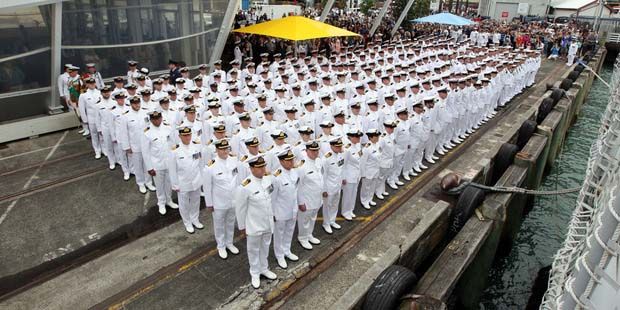 Navy members at Queens Wharf during the parade. — Photo: Doug Sherring.KIWI VETERANS joined nearly 600 sailors for a parade down Auckland's Queen Street this morning to mark the 75th anniversary of the Battle of the River Plate. Navy members at Queens Wharf during the parade. — Photo: Doug Sherring.KIWI VETERANS joined nearly 600 sailors for a parade down Auckland's Queen Street this morning to mark the 75th anniversary of the Battle of the River Plate.
HMS Achilles was the first New Zealand unit to strike a blow against the enemy in World War Two, when it engaged the German pocket battleship Admiral Graf Spree off the coast of Uruguay on December 13th, 1939.
Veterans John Thomson, Roy Wade, Harold Heffer and Robert Batt, all in their 90s, were awarded service medals on board HMNZS Te Kaha by the Governor-General, Sir Jerry Mateparae.
There were hundreds of people lining the streets cheering and applauding as the veterans were ferried down Queen Street in vintage cars.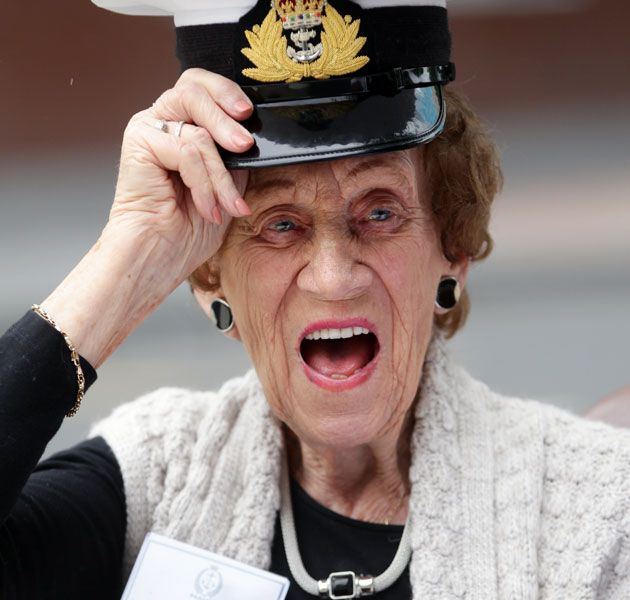 The Battle Of The River Plate 75th Anniversary March on Queen Street, Auckland. The Battle Of The River Plate 75th Anniversary March on Queen Street, Auckland.
Pictured is Joy Thomson. — Photo: Doug Sherring.The Auckland event, which started at 11am, re-created the HMS Achilles homecoming parade in 1940.
Surviving veterans of HMS Achilles led proceedings in four vintage cars.
They were followed by the Royal New Zealand Navy Band and 582 sailors of the Royal New Zealand Navy.
Behind them were 100 Sea Cadets, the Navy Pipes and Drums Band and the families of veterans who are no longer alive.
Following the parade, Sir Jerry presided over a ceremony on Te Kaha at Queens Wharf to pay tribute to the four remaining veterans, now aged in their 90s, for their service to New Zealand.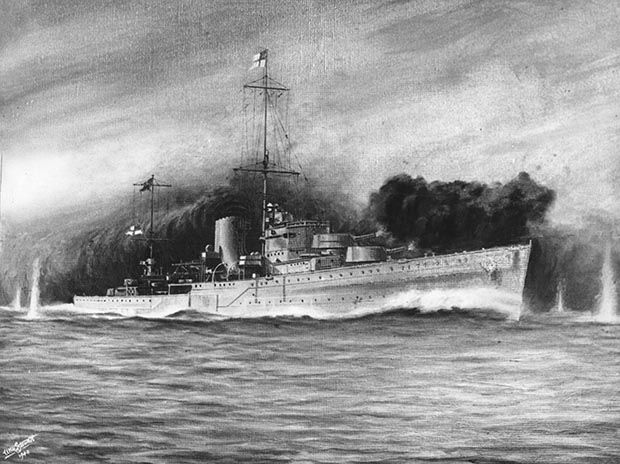 HMS Achilles in action at the Battle of River Plate. A painting by W.W. Stewart of Auckland. HMS Achilles in action at the Battle of River Plate. A painting by W.W. Stewart of Auckland.
— Picture: NZ Herald Archive.The day began with a memorial and wreath laying at Achilles Point, St Heliers, at 9am.
This was attended by the Governor-General, the ambassadors of Germany, Argentina and Uruguay, the high commissioners of India and Britain, and New Zealand's Chief of Navy, Rear Admiral Jack Steer.
The Battle of the River Plate in 1939 was prior to the formation of the Royal New Zealand Navy in 1941.
At the time of the battle, HMS Achilles had been loaned to New Zealand by the Royal Navy and was crewed on the whole by New Zealanders.
HMS Achilles was manned by 312 New Zealand Navy personnel. The famous battle was a morale-boosting victory for the Allies.• Russell Blackstock is a senior reporter at the Herald on Sunday.www.nzherald.co.nz/nz/news/article.cfm?c_id=1&objectid=11373787
from the HERALD on SUNDAY....Naval vets honouredBy RUSSELL BLACKSTOCK | 5:30AM - Sunday, December 14, 2014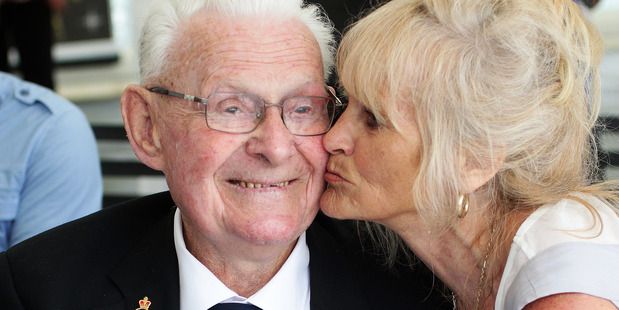 Veteran Bob Batt receiving a kiss from his daughter Fiona Dryland. — Photo: Doug Sherring.FOUR surviving veterans of one of New Zealand's most famous naval battles joined nearly 600 sailors and thousands of well-wishers in a parade on Auckland's Queen Street yesterday to mark the Battle of the River Plate's 75th anniversary. Veteran Bob Batt receiving a kiss from his daughter Fiona Dryland. — Photo: Doug Sherring.FOUR surviving veterans of one of New Zealand's most famous naval battles joined nearly 600 sailors and thousands of well-wishers in a parade on Auckland's Queen Street yesterday to mark the Battle of the River Plate's 75th anniversary.
HMS Achilles was the first New Zealand unit to strike a blow against the enemy in World War II, when it engaged German pocket battleship Admiral Graf Spee off the coast of Uruguay on December 13th, 1939.
Achilles was manned by 312 New Zealand Navy personnel. The Auckland event, which started at 11am, re-created Achilles' homecoming parade in 1940.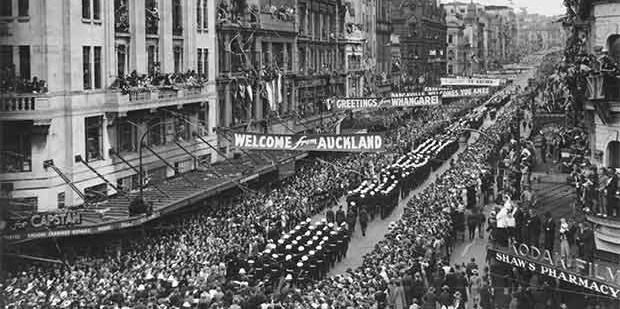 An enthusiastic welcome was given by Auckland citizens to the officers and men of H.M.S. Achilles An enthusiastic welcome was given by Auckland citizens to the officers and men of H.M.S. Achilles
after their sea victory. 28th February 1940. — Photo: NZ Herald Archive.Veterans of Achilles led proceedings in four vintage cars. Among them was Bob Batt, pictured with his daughter Fiona Dryland.
The 92-year-old was just 17 when he went into battle, with his role being to ensure the Achilles' four-inch guns were at the right elevation.
“You were too busy getting on with your job to be scared,” he said.
Batt said he was “proud and honoured” to be alongside fellow veterans John Thomson, Harold Heffer and Roy Wade yesterday.• Russell Blackstock is a senior reporter at the Herald on Sunday.www.nzherald.co.nz/nz/news/article.cfm?c_id=1&objectid=11373876
|
|
|
|
Post by kiwithrottlejockey on Dec 14, 2014 13:22:05 GMT 12
When we were sorting out our parents estate almost three years ago, I discovered a copy of the book “The Battle of the River Plate” by Dudley Pope. And I've got a copy of The Battle of the River Plate movie on DVD. Needless to say, I grabbed it for myself. Also amongst my Dad's books was “Reach for the Sky” by Paul Brickhill and “Wing Leader” by Johnnie Johnson, so naturally I brought those two books home as well.
|
|
|
|
Post by kiwithrottlejockey on Dec 14, 2014 14:55:02 GMT 12
Some related photographs from the Alexander Turnbull Library website.
Click on each individual photograph to learn more about it. 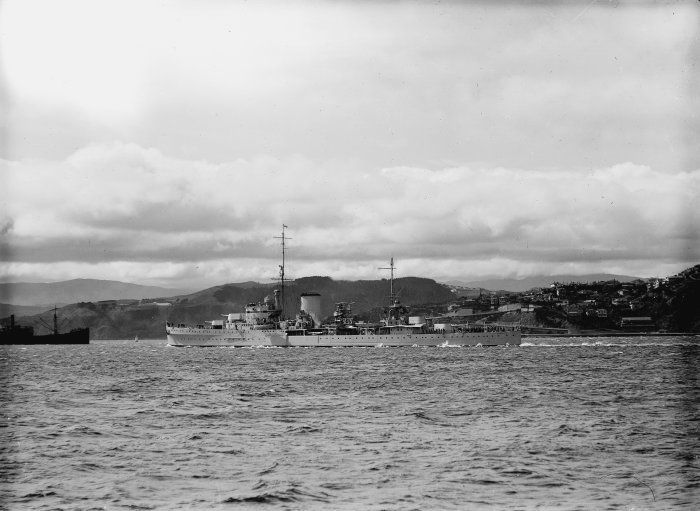 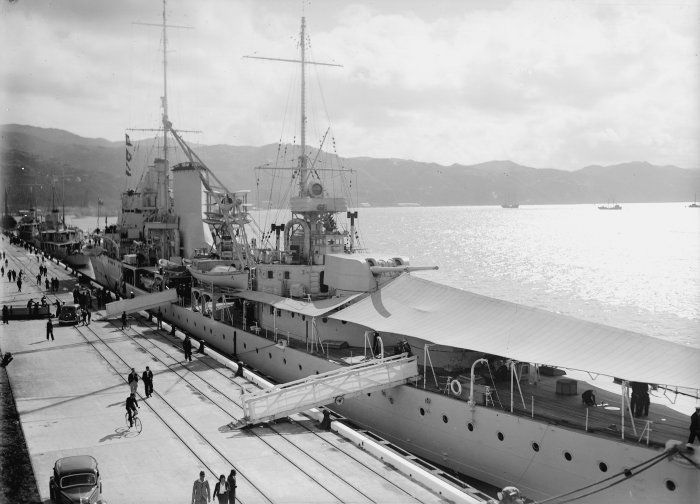 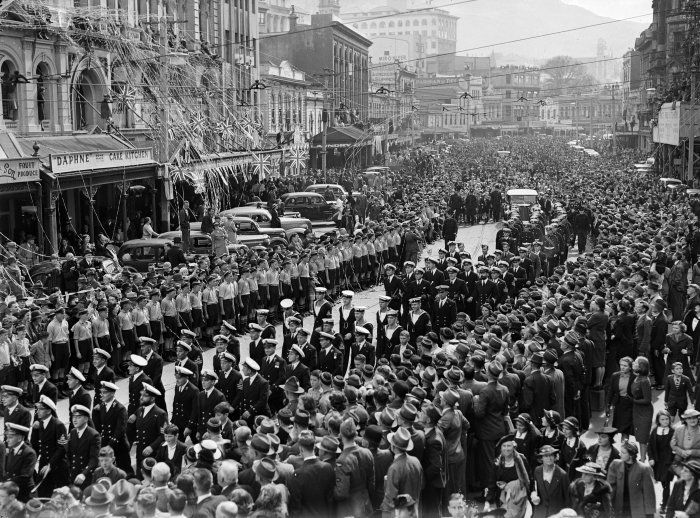 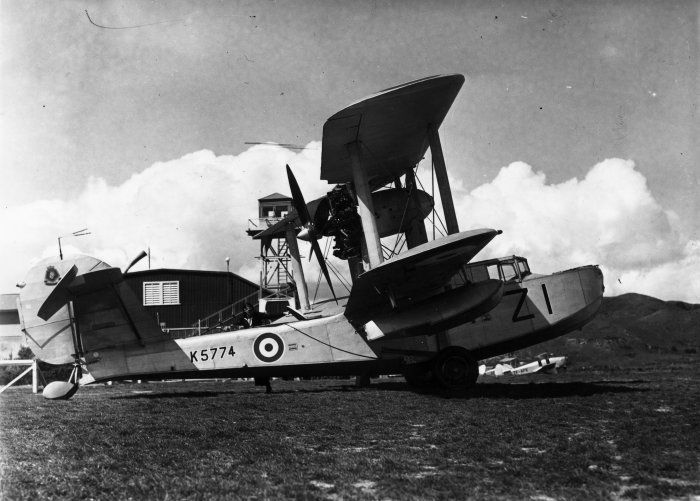
|
|
|
|
Post by nuuumannn on Dec 14, 2014 23:52:17 GMT 12
Fantastic images. Although it's often regarded as such, actually it wasn't. On the night of 23 November 1939, accompanied by a task force comprising the Gneisenau and a handful of destroyers, the Scharnhorst attacked and sank the armed merchant cruiser Rawalpindi south of Iceland, which opened fire first with its six inch guns at the German battleship, but knowing it was outgunned by the Germans, the AMC's captain (the father of author Ludovic Kennedy, who penned the book Pursuit about the hunt for the Bismarck and a serving naval officer during the war himself) opted to fight it out to the death. The British light cruisers HMS Newcastle and Delhi arrived on the scene after receiving a transmission from the AMC and began firing at the German ships, but their heavy guns kept the cruisers at bay. The combat was over relatively swiftly, but the inclement weather aided the Germans in their escape. The Germans, being the honourable chaps they were stopped to pick up survivors, but were interrupted in the middle of their rescue mission once the Newcastle and Delhi arrived and began firing on the British ships. The Rawalpindi's radio call stating it was going into battle spurred a flurry of naval activity from the Allies; the battleships Nelson and Rodney were sent north from the Clyde that evening, the Hood and the French battleship Dunkerque were sent up the Irish coast the next day. On the 25th, at least six British cruisers and 14 destroyers headed up into the North Sea to attempt to trap the German force in a pincer movement, but the rough weather gave the Germans the opportunity to escape down the Norwegian coast, during which time they passed unseen through a screen of British submarines, arriving at Wilhelmshaven on the 26th. A couple of pictures from the RNZN museum at Torpedo Bay. The telegram that was received from Ajax's Fairey Seafox stating the Graf Spee had blown herself up. 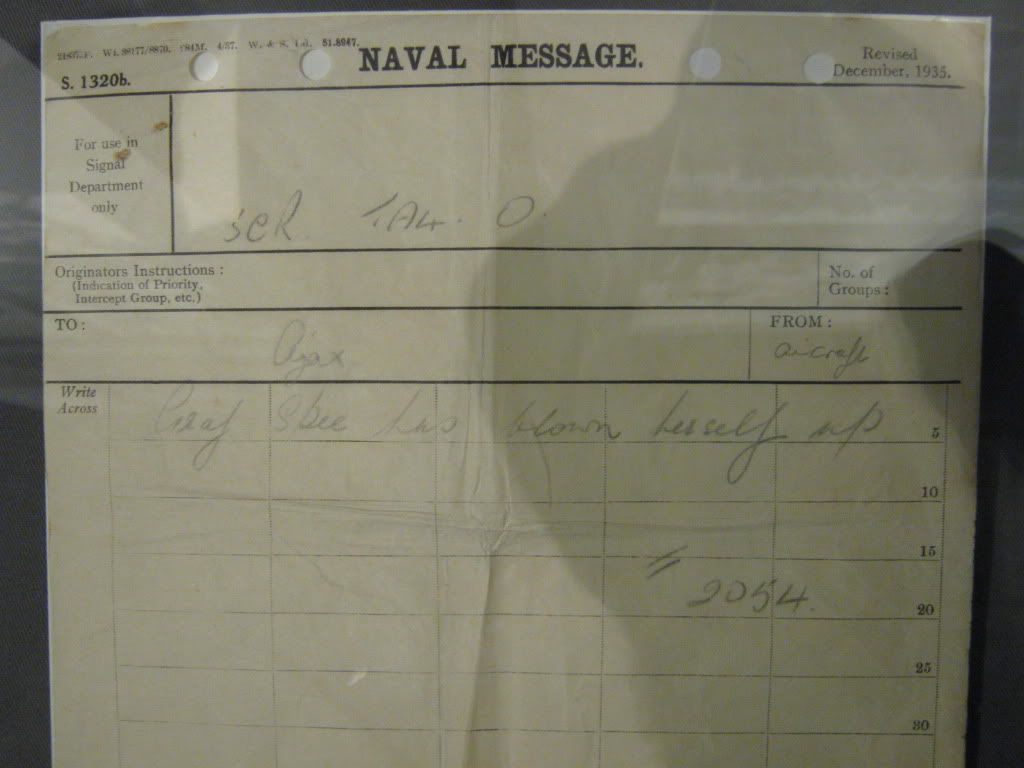 That moment.  The Achilles' turret inside the gates at Devonport. 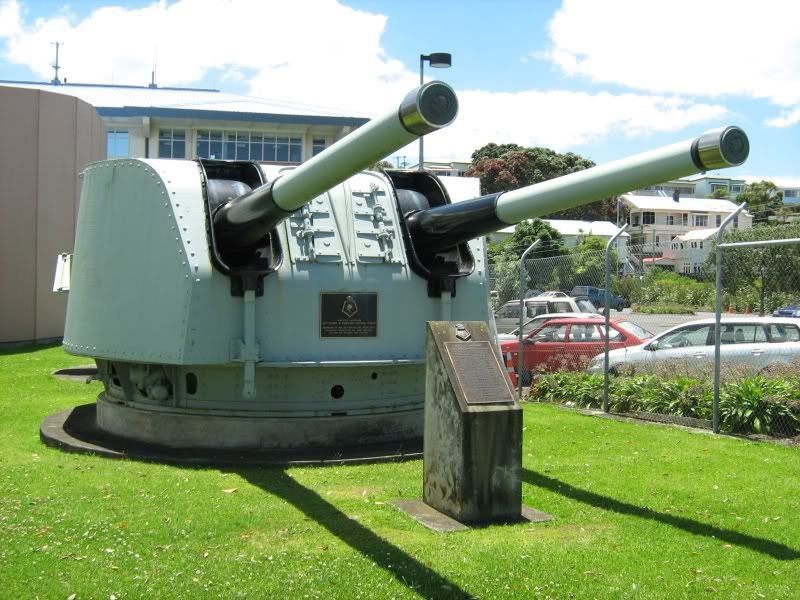 |
|
|
|
Post by kiwithrottlejockey on Dec 19, 2014 17:23:29 GMT 12
from The New Zealand Herald....Flag's proud heritage fading to blackDominance of our sporting culture threatens to send the
current ensign the way of legendary Kiwi WWII warship.By PETER BROMHEAD | 5:30AM - Friday, December 19, 2014 Serving under the flag. — Illustration: Peter Bromhead.THERE IS a growing belief that we're going to end up with a national flag that reflects our prowess on the rugby field rather than continuing with the existing emblem, no matter how well-steeped in historic heritage it is. Serving under the flag. — Illustration: Peter Bromhead.THERE IS a growing belief that we're going to end up with a national flag that reflects our prowess on the rugby field rather than continuing with the existing emblem, no matter how well-steeped in historic heritage it is.
It's a vexing business wanting to change our identity symbol, doubtless propelled by a growing desire to shake off our last visual links to Mother Britain, ridding ourselves of the cornerstone Union Jack.
Part of the dilemma is measuring the illustrious significance of today's flag and the blood spilled under it in a number of conflicts. Ditching an icon that many proudly served and died under, simply for a new design, particularly if we end up with something that looks like an All Black jersey, seems almost fatuous.
For example, how many New Zealanders today would be able to name the first occasion our national ensign was raised in battle in World War II?
This momentous event even puzzled German sailors who had to hurriedly check their identity codebooks at the time, curious as to which one of the British Empire's numerous appendages appeared to be part of a cruiser squadron sighted off the South American coast in the early days of the conflict.
The occasion has gone down in the history books as the Battle of the River Plate, when our national flag was raised to the masthead of the Leander-class light cruiser HMS Achilles, manned by a New Zealand division, to face the red, white and black swastika flying from the bridge of the German heavy cruiser Admiral Graf Spee on December 13th, 1939.
The British force, consisting of three cruisers more lightly armed, were clearly no match to the superior firepower of the German raider and the British squadron prudently split in different directions, HMS Exeter separating from HMS Ajax and her sister cruiser Achilles, who continued the operation in close company.
The initial battle quickly established the Graf Spee's superior gunfire, with the Exeter badly damaged from a series of direct hits, but in turn scoring a direct vital hit below the raider's decks, destroying her raw fuel processing system, leaving the German diesel-powered warship with just 16 hours of fuel, insufficient to allow her to return to Germany.
Meanwhile, both the Ajax and the Achilles kept closing with the Graf Spee, damaging both the warship's anti-aircraft guns and knocking out a secondary gun turret, before hastily retreating again under cover of smokescreens, as they in turn were pounded by the enemy's heavier and more accurate firepower.
The battle has been described as like watching a small pack of Jack Russell terriers tormenting an outraged bull.
The event eventually turned into a somewhat one-sided pursuit, with the Achilles shadowing the German cruiser from a safe distance as it finally entered the River Plate, with the German commander, Captain Langsdorff, deciding to drop anchor in neutral Uruguay to hopefully carry out repairs and replenish his fuel position.
Over the next few days, he was deceived into believing that a superior British force had arrived at the River Plate's entrance and the German captain made an ill-fated decision to scuttle the Graf Spee while still at anchor and save further loss of life, much to the fury of Adolf Hitler in Berlin.
Thus ended the first sea battle of World War II, where a New Zealand division (precursor of the Royal New Zealand Navy) played a significant role in the first conflict by a British Commonwealth force.
HMNZS Achilles, as she was later named, served in both the Atlantic and Pacific war zones. One of two curiosities not generally known was that the ship carried a radio-controlled unmanned aircraft known as a DH.82 Queen Bee, a forerunner of today's drone aircraft. In fact, the term “drone” originates from the name “Queen Bee”. The second interesting footnote was the development of a bit of “Kiwi manufacturing know-how” from 75 years ago.
HMNZS Achilles was the first cruiser in the British fleet to have gunfire-control radar, with the installation of the New Zealand-made SS1 fire-control radar in June 1940.
After World War II service, the Achilles was sold to the Indian Navy in 1948 and recommissioned as INS Delhi. She was finally scrapped in 1978.
Before scrapping, the cruiser was offered for sale. This writer tried hard to persuade various authorities to bring the former HMNZS Achilles back to New Zealand as a tourist attraction (having been born in Portsmouth under the shadow of Nelson's ship Victory). I believed there was a significant opportunity to own a piece of maritime history of considerable long-term value to the nation. Unfortunately, my pleas fell on deaf ears with both the government and civic leaders of the day and the best we could do was end up with a single gun turret, gifted to New Zealand and now installed at the Devonport naval base.
I wonder how long it will be before our existing national flag — with its distinguished history — also becomes another piece of historic bric-a-brac, only to be viewed in museums?www.nzherald.co.nz/nz/news/article.cfm?c_id=1&objectid=11376381
|
|